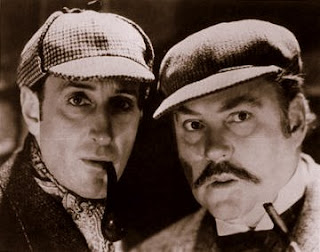Jay, 17, is writing a play. He's got a few technical questions for Uncle Ant.
1. Is it ok for me to incorporate other languages in the script? There are just some things which cannot be said in proper English, won’t have the “mood”. Some things in Mandarin, we just can't find an English substitute. (English is my second language, I'm Chinese-ed.)
There are no hard and fast rules about incorporating a mix of languages in your script, Jay. Certain things cannot be taught, only learnt, and one of these things is a sharp artistic instinct that tells you what works and what doesn't. Experiment all you want. Read what you've written aloud and see how it sounds. Rework till it sounds just right. Bear in mind that if you insert too many Mandarin expressions, the non-Mandarin speakers in your audience may feel left out. Insert in such a way that the meaning can be inferred from the action. If you're not 100% comfortable writing in English, why not write a Mandarin play instead? If it's any good, someone else can translate it into English later.
2. How do you know why a person is acting in a certain way? I don’t know why the parents in my play are behaving like this. I think the father doesn’t want a confrontation with the mother, but she’s nagging him ... pushing his patience. Don’t know why the mother’s a nag tho. Do playwrights talk to their parents before writing such plays or what?
 |
| "Family Dynamics" by Elizabeth Seaver |
3. Must it have a “positive message”, “nilai-nilai murni” or whatever?
The last thing you want is to deliberately include any kind of "message" whether positive or negative. Rather, just tell the story and allow the audience to draw their own conclusions.
That's where the "art" comes in. The artist's job is to select details from "real life" to be expressed in an artistic medium, whether as prose or poetry, painting or sketch, musical composition, dance movement or dramatic scene. The skill of the artist consists of his or her ability to evoke a range of emotional and aesthetic responses from the audience - whether amusement or indignation or anxiety or vicarious pain or pleasure.
4. The main character comes across as rather reluctant to talk esp when he’s intimidated ... either he’s sullen and rebellious, or he’s too scared cos he doesn’t want to say the wrong thing. So the people who’re talking to him at the time read like they’re doing a monologue. Is that ok, or should I write out that he’s refusing to respond, then let the person go on talking?
This is a basic technical problem which can be easily solved by inserting in brackets what the protagonist (main character) is thinking or feeling as the other characters are speaking. For example: [Protagonist shuffles around impatiently, not really listening, looking for a chance to escape the lecture.] These are playwright's notes addressed to the actor as a suggested response, e.g., [Protagonist maintains a false smile throughout, nodding every so often in feigned agreement.]
5. As I go on exploring the story, more characters appear. This started out as a simple 20 minute play for the inter-school English drama comp with only 4 characters, and it was mainly based in the main characters' home and there're a couple of scenes with extras acting as students going home from school. Now the school's involved too ... which means teachers, classmates ... and it's more complicated. One (or one and a half) hours sounds like a looooong time. Is is ok to have a few more characters? How many should a play have? Agak agak ...
A general rule of thumb: the more characters you introduce to a play, the more complicated the task of keeping them all credible and interacting smoothly. So if you're a novice playwright, best not to be overly ambitious and start writing a play with dozens of characters. Build up your confidence and skill by starting with just a few key characters. If it's your maiden play, it's okay to make it a short one - sort of a one-acter. There's no need to tackle a full-length production until you acquire some experience in the craft. Why put in a lot of useless padding just to fill out a 90-minute time slot when you're better off aiming for a really tight-paced 40-minute play?
6. When I wrote this play, it came out in patches ... How do I connect the dots?
You mean the patches? Use thread. Stories are like threads, and the playwright sews various lives together like a quiltwork using certain themes. If the scenes are isolated moments and don't require any form of linear flow to connect them, then a simple device to hold them - just as you use a basket to keep an assortment of beads or shells - will suffice. It could be a musical or lighting effect signalling the end of one scene and the start of another; or a multimedia interlude, or even the voice of an unseen narrator. Use your imagination!
If you mean the dots, use a pencil – and then ink over the lines when you’ve got a clear picture of what you want to convey. Good luck, Jay!

























